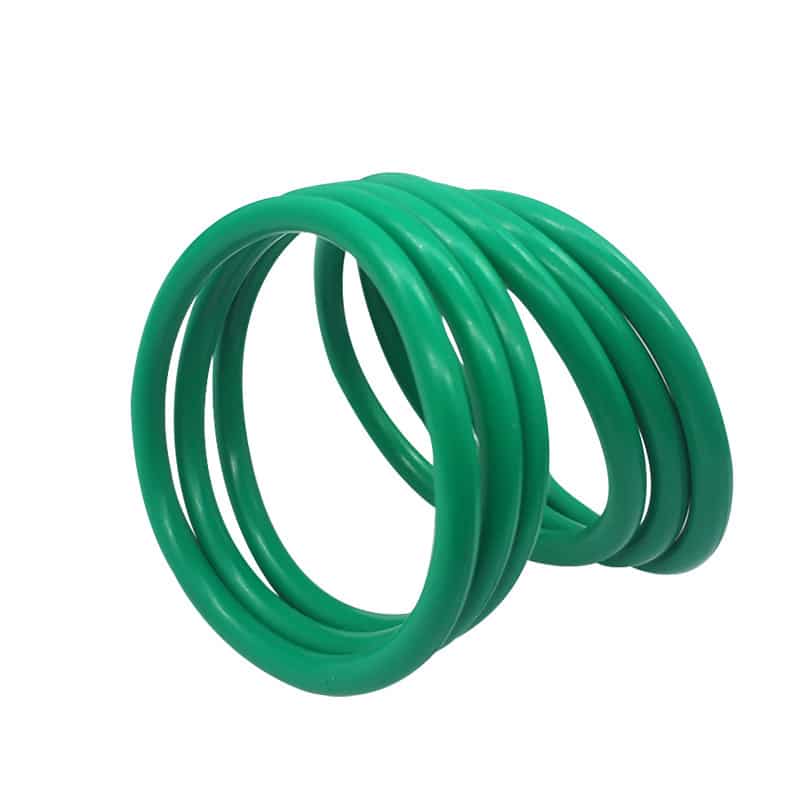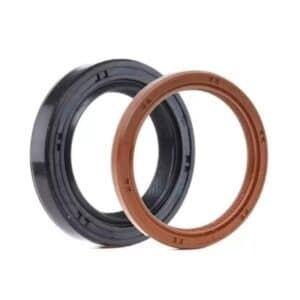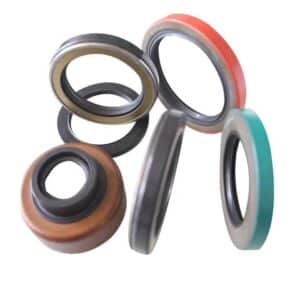Choosing the wrong O-ring material can cause leaks, system failures, and costly downtime. How do you decide between FKM and NBR O-rings for your specific needs?
FKM O-rings outperform NBR in heat, chemical, and fuel resistance, while NBR excels in cold flexibility and cost-efficiency.

Let me guide you through the key differences and help you make the best choice.
What is the difference between NBR and FKM O-rings?
Both NBR (Nitrile) and FKM (Fluorocarbon) are popular elastomers but serve different environments.
| Propriété | Joint torique FKM | Joint torique NBR |
|---|---|---|
| Résistance à l'huile | ⭐⭐⭐⭐⭐ Excellent | ⭐⭐⭐ Good |
| Résistance au carburant | ⭐⭐⭐⭐ High | ⭐⭐ Moderate |
| Résistance chimique | ⭐⭐⭐⭐⭐ Superior | ⭐⭐ Limited |
Conclusion: Choisir Joints toriques FKM for aggressive environments. Use Joints toriques NBR for simple oil sealing at lower costs.
Which O-ring is better for high temperature applications?
Temperature range is critical when selecting the right seal material.
| Fonctionnalité | Joint torique FKM | Joint torique NBR |
|---|---|---|
| Plage de température | -20°C à 200°C | -40°C à 120°C |
| Résistance à la chaleur | ⭐⭐⭐⭐ Excellent | ⭐⭐ Poor |
| Flexibilité à froid | ⭐⭐ Moderate | ⭐⭐⭐⭐⭐ Excellent |
Conseil: Above 120°C, always choose Joints toriques FKM. For cold applications, NBR is more flexible.
When should you use FKM O-rings instead of NBR?
Choosing the right material depends on your real-world application.
Use FKM O-rings for:
- Moteurs et systèmes de carburant
- Traitement chimique
- High-temperature hydraulics
Use NBR O-rings for:
- Pneumatic and hydraulic machinery
- Refrigeration systems
- Production OEM sensible aux coûts
Need general-purpose sealing? Discover NBR O-rings for industrial use.
What common mistakes to avoid when choosing between FKM and NBR?
Avoid these costly errors:
- Erreur 1 : Using NBR above 120°C → FKM is needed for high heat.
- Erreur 2 : Choosing FKM for low-stress jobs → NBR saves money without sacrificing quality.
- Erreur 3 : Ignoring chemical compatibility → Always verify resistance charts.
Explore our complete FKM selection guide pour des informations plus approfondies.
Summary: Which O-ring material suits your application best?
| Critères | Joint torique FKM | Joint torique NBR |
|---|---|---|
| Résistance à la chaleur | ✅ Excellent | ❌ Pauvre |
| Résistance à l'huile | ✅ Élevé | ✅ Modéré |
| Résistance chimique | ✅ Fort | ❌ Faible |
| Flexibilité à froid | ❌ Modéré | ✅ Excellent |
| Coût | ❌ Plus haut | ✅ Plus bas |
| Idéal pour | Systèmes critiques | Industrie générale |
Conclusion
Choosing between FKM and NBR is about matching your application’s environment and budget for long-term success.
Get expert advice for your O-ring selection
📩 Courriel : [email protected]
📞 WhatsApp : +86 17622979498
Related post
- NBR O-Rings: Selection and Applications
- FKM Seals & O-Rings for High-Temperature Use
- Comment fonctionnent les joints toriques : guide complet


